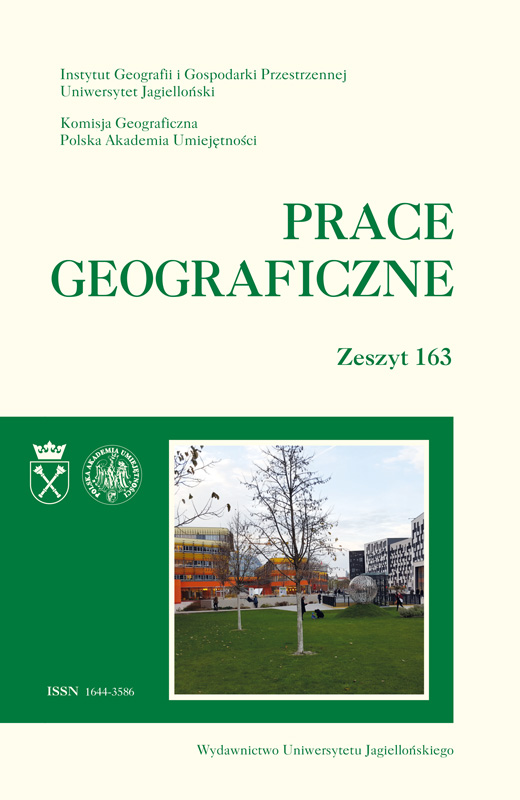Kampus Uniwersytecki Morasko w Poznaniu – geneza, struktura przestrzenno-funkcjonalna, obsługa transportowa
Morasko University Campus in Poznań – origin, spatial and functional structure, transport solutions
Author(s): Katarzyna Kulczyńska, Natalia Borowicz, Karolina Piwnicka-WdowikowskaSubject(s): Geography, Regional studies
Published by: Wydawnictwo Uniwersytetu Jagiellońskiego
Keywords: Morasko Campus; Poznań; spatial and functional structure; transport accessibility
Summary/Abstract: The purpose of the paper is to characterize the most recently created part of the Adam Mickiewicz University – the Morasko Campus. The paper consists of three parts. The first concerns the origins and development of the campus. The second part presents its spatial and functional structure on the basis of a field inventory, while the third one – campus transport solutions based on a survey conducted among students. The history of the campus located in the northern, peripheral part of the city began with laying the foundation act and the cornerstone in 1977. The agricultural role of this area, dominant until the 1980s, has been replaced with new functions, mainly academic and scientific ones. The first university buildings were commissioned in the 1990s, and the construction boom began after 2000. A total of nine faculties (out of 21 existing) are housed in eight buildings in the campus, including exact and natural sciences, as well as a part of social sciences and humanities. To this day, neither student dormitories nor accommodation for PhD students have been constructed (although they are likely to be built), which would emphasize the academic function of the campus. The campus also comprises areas with recreational, sports, residential and other service functions (e.g. catering, beauty, hairdressing, and commercial services), which are complemented by areas that serve transport functions. Location in the northern periphery of the city, and above all the railway line for freight (the northern bypass of Poznań) separating the city from the campus, makes transport to this part of the city limited. The results of the survey revealed a lack of a safe bicycle path between the western and eastern part of the campus, insufficient number of parking places for motorists, a lack of paved roads from the north and west, only three narrow access roads for car commuters, and difficult access by public transport to the eastern and north-eastern parts. In the latter case, the planned extension of the tram line towards Umultowo after the year 2022 is expected to solve the problem.
Journal: Prace Geograficzne
- Issue Year: 2020
- Issue No: 163
- Page Range: 7-32
- Page Count: 26
- Language: Polish

